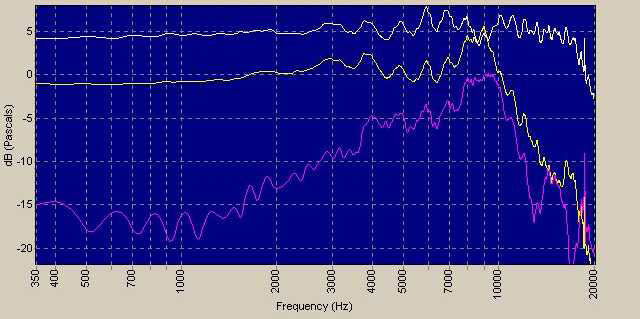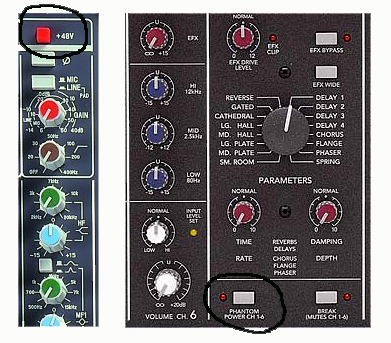
Phantom Cases
Not only does phantom power provide the necessary voltage for the plates, it also provides power to the onboard impedance transformer. Without phantom power, the large-diaphragm air-condenser mics will simply not work. So where does it come from? Normally, the mixing console supplies phantom power.
Many consoles offer a separate button or switch on each channel that will enable phantom power. Some consoles have a switch that enable several channels at once, or one switch that enables all of the channels.
Fewer buttons saves cost but sacrifices function. And certain consoles don’t offer phantom power capability or only 18-volt phantom power for electret condenser mics only, making external power supplies necessary for 48-volt air condensers.

With a crisp clean sound, it’s tempting to use condensers on vocals. You’ll find numerous models designed for just that purpose. But be aware of some precautions. Condenser mics are more fragile than dynamic moving coil mics, so it’s a good idea to have solid road case for them when used on tour.
Also note that because condensers are so sensitive, they tend to be more susceptible to feedback. Care must be taken to manage stage volume. In-ear monitors can be useful in this scenario. Also be sure to make your vocalists are aware of these facts as well so that they can take some precautions.
What if you phantom power a dynamic mic? It doesn’t damage the mic, but it’s unnecessary. Here’s a tip – if you’re using a condenser mic and notice that you’re not phantom powering it (because there’s no sound!), mute the channel before engaging the phantom power. Doing this while a channel is live can result in a loud pop.
There can never be too many mics to choose from, and inventive engineers and microphone manufacturers are discovering new techniques on a regular basis. Experiment, evaluate and make your own live sound a little better.
Scott Foulkrod has a degree in audio engineering and currently teaches audio engineering at the college level.
